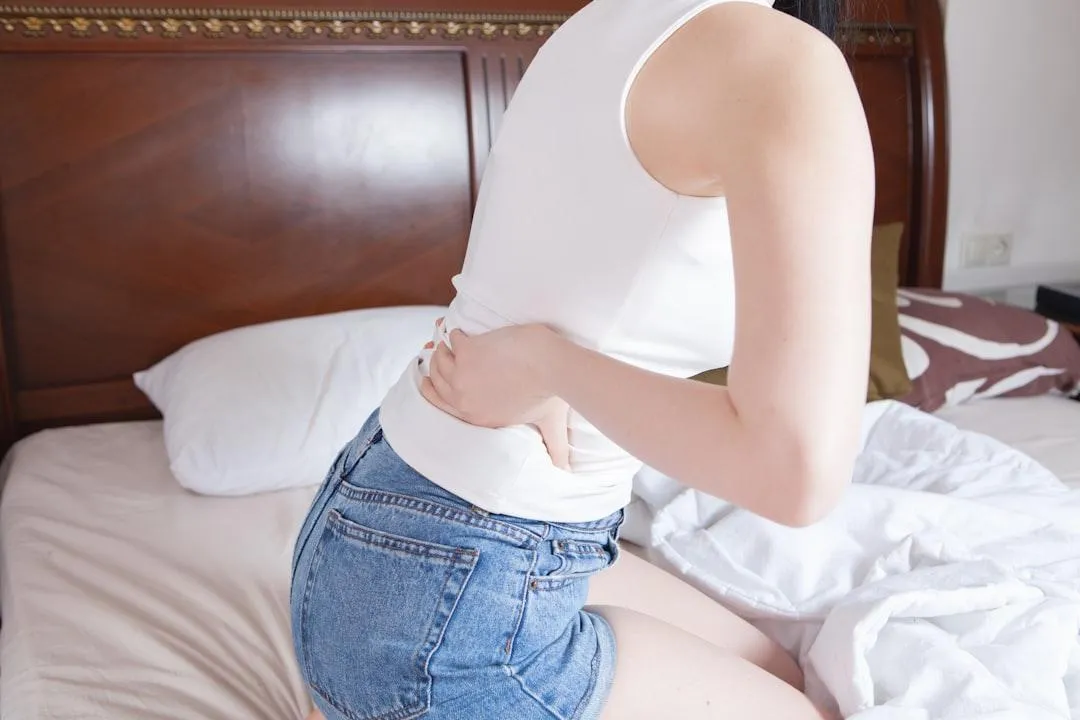BLOG
Step into Your Power. Learn, Transform, Thrive in Life Transitions. Embrace Your Best Self.

Understanding Low Back Pain in Women: Causes, Symptoms & Solutions
Understanding Low Back Pain in Women: Causes, Symptoms & Solutions
By Roberta Bass, Women’s Health Physiotherapist
Thrive and Shine Women’s Wellness | Making Sense of Women’s Health Podcast
Low back pain is one of the most common reasons women seek help — especially in midlife, postnatally, and during menopause. It can affect every part of daily life and often comes back again and again.
In this post, I break down the different types of low back pain, what might be causing yours, and how to start managing it more effectively.

Common Types of Low Back Pain
Non-specific mechanical pain – the most common type. Often linked to movement patterns, fatigue, posture or weakness.
Disc-related pain – central or one-sided pain that may radiate down the leg. Often worse with sitting or bending.
Facet joint pain – sharp pain on one side of the back, worse when leaning backwards.
Muscle-related (myogenic) pain – tight, achy, or fatigued muscles.
Osteoarthritis or degenerative changes – morning stiffness, dull ache, worse with walking.
Inflammatory conditions (e.g. ankylosing spondylitis) – pain and stiffness worse in the morning or at night, improves with movement.Supplements to Be Cautious With
Women’s Health–Specific Causes
Women may also experience low back pain due to:
Pelvic floor overactivity (can mimic hip/back pain)
Postnatal recovery or C-section (weakened core, scar adhesions, baby lifting)
Prolapse (dragging or heavy sensation in the lower back)
Endometriosis (cyclical or chronic pain in the back, hips, or legs)
When to Seek Medical Advice
Seek urgent medical care if you experience:
Sudden changes in bladder or bowel control
Numbness in the saddle area
Pain down both legs
Unrelenting night pain or severe pain
History of trauma, cancer, unexplained weight loss or fever
What Helps
Helpful strategies include:
Regular movement and strength work (e.g. Pilates)
Soft tissue therapy and joint mobilisation (combined with active rehab)
Nervous system support (CONTROL, breathwork, pacing)
Ergonomic changes (desk setup, posture, sleep position)
Women’s health physiotherapy (especially for postnatal or pelvic causes)
Final Thoughts
You don’t have to put up with back pain. With the right support, you can understand what’s going on in your body and take steps to feel stronger, more comfortable, and more confident in movement.
🎧 Listen Now
This blog is based on the latest episode of Making Sense of Women’s Health. For a full breakdown of the types, causes, and solutions for low back pain in women, listen to the episode on your favourite podcast platform.
To book a physiotherapy assessment or learn more about Women’s Health MOTs, visit:
👉 www.thriveandshinewomenswellness.co.uk

Sign up for our newsletter.
BLOG
Step into Your Power.
Learn, Transform, Thrive in Life Transitions.
Embrace Your Best Self.

Understanding Low Back Pain in Women: Causes, Symptoms & Solutions
Understanding Low Back Pain in Women: Causes, Symptoms & Solutions
By Roberta Bass, Women’s Health Physiotherapist
Thrive and Shine Women’s Wellness | Making Sense of Women’s Health Podcast
Low back pain is one of the most common reasons women seek help — especially in midlife, postnatally, and during menopause. It can affect every part of daily life and often comes back again and again.
In this post, I break down the different types of low back pain, what might be causing yours, and how to start managing it more effectively.

Common Types of Low Back Pain
Non-specific mechanical pain – the most common type. Often linked to movement patterns, fatigue, posture or weakness.
Disc-related pain – central or one-sided pain that may radiate down the leg. Often worse with sitting or bending.
Facet joint pain – sharp pain on one side of the back, worse when leaning backwards.
Muscle-related (myogenic) pain – tight, achy, or fatigued muscles.
Osteoarthritis or degenerative changes – morning stiffness, dull ache, worse with walking.
Inflammatory conditions (e.g. ankylosing spondylitis) – pain and stiffness worse in the morning or at night, improves with movement.Supplements to Be Cautious With
Women’s Health–Specific Causes
Women may also experience low back pain due to:
Pelvic floor overactivity (can mimic hip/back pain)
Postnatal recovery or C-section (weakened core, scar adhesions, baby lifting)
Prolapse (dragging or heavy sensation in the lower back)
Endometriosis (cyclical or chronic pain in the back, hips, or legs)
When to Seek Medical Advice
Seek urgent medical care if you experience:
Sudden changes in bladder or bowel control
Numbness in the saddle area
Pain down both legs
Unrelenting night pain or severe pain
History of trauma, cancer, unexplained weight loss or fever
What Helps
Helpful strategies include:
Regular movement and strength work (e.g. Pilates)
Soft tissue therapy and joint mobilisation (combined with active rehab)
Nervous system support (CONTROL, breathwork, pacing)
Ergonomic changes (desk setup, posture, sleep position)
Women’s health physiotherapy (especially for postnatal or pelvic causes)
Final Thoughts
You don’t have to put up with back pain. With the right support, you can understand what’s going on in your body and take steps to feel stronger, more comfortable, and more confident in movement.
🎧 Listen Now
This blog is based on the latest episode of Making Sense of Women’s Health. For a full breakdown of the types, causes, and solutions for low back pain in women, listen to the episode on your favourite podcast platform.
To book a physiotherapy assessment or learn more about Women’s Health MOTs, visit:
👉 www.thriveandshinewomenswellness.co.uk

Sign up for our newsletter.




